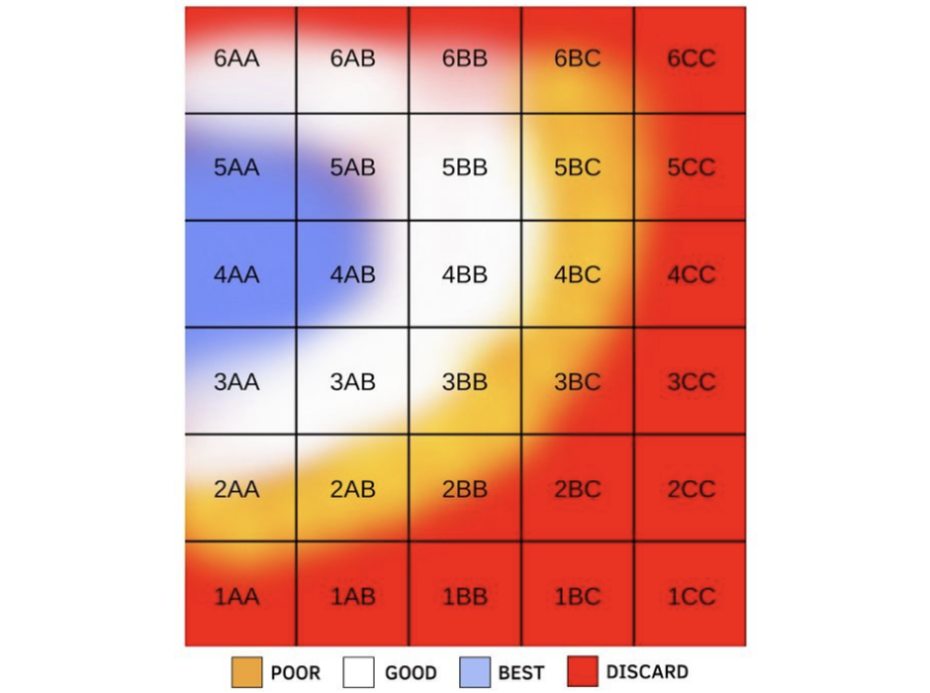

veröffentlicht am 04. Dezember 2023
Embarking on the journey toward parenthood through In Vitro Fertilization (IVF) is both exciting and a tad overwhelming. You have probably heard of embryo grading, but it is complex and sometimes subjective, and very easily misunderstood.
This overview should in no way replace the expertise of qualified fertility specialists and embryologists. Our goal here is to share the basics of embryo grading to enable you to discuss this topic with your embryologist and doctors more confidently and knowledgeable.
To set the stage, let’s discuss what embryos are and why they’re graded. In the context of IVF, embryos are the result of fertilizing an egg with sperm in a specialized lab and cultivated for 5-6 days to yield viable blastocysts, sometimes already referred to as embryos. These little bundles of cells have the potential to develop into a baby. But here’s the catch: not all embryos have the same potential to result in a healthy pregnancy and a healthy child, and this is where grading comes into play.
Embryo grading is like a report card for embryos, providing insights into their quality and potential to develop into a healthy fetus. Specialized IVF experts assess various aspects of the embryo, offering them a grade that hints at their viability. However, remember that a lower grade doesn’t automatically discount an embryo’s potential to result in a healthy, successful pregnancy.
At Delivering Dreams International Surrogacy Agency, we work with embryo grading, and with this short guide, the grading will be more understandable. Still, this is just an overview. Based on their incredible experience the embryologists will also recommend which of your embryos they believe have the strongest potential for a successful transfer. You can always ask questions and for clarifications. This is an important decision!
It bears noting that embryo grading is a significant indicator of a successful pregnancy, but it is never a guarantee. In IVF sometimes the lowest grade of embryo will be successful and the highest will fail. Many factors influence a successful transfer beyond the quality of the embryo, most notably the quality and experience of the doctors, the quality of the stimulation process, and if you are doing surrogacy the surrogate herself.
The most viable embryos are those that are successfully cultivated in ideal laboratory conditions until day 5. Sometimes an embryo might not be fully developed on day 5 and the embryo will be cultivated another day in hopes of getting another viable embryo.
The milestones of cultivation are days one, three, and five. Day zero is the day of actual fertilization - IVF with ICSI. Here we will explain each of these stages.

As we navigate to day 5, the embryo, now referred to as a blastocyst, reaches the most important developmental milestone.
The grading system for Day 5 is based on four pivotal aspects:

In the blastocyst stage, the blastocoel is graded from 1 to 6. Each number provides a snapshot of its expansion journey:
The ICM (Inner Cell Mass), a crucial cell cluster within the blastocyst, destined to form the fetus, is assessed with a grading scale of A to C:
The TE, the outer cellular layer of the blastocyst that will transform into the placenta and other pivotal pregnancy-supporting tissues, is also appraised with an A to C grading system:
An embryo graded 5AA on day 5 indicates that the TE is dynamically piercing through the ZP, accompanied by a tightly packed ICM and TE, alluding to an embryo with a stellar potential for successful implantation and onward development.
Embryo grading unveils a myriad of combinations. But what do these combinations tell us about the embryo’s journey?
The essence of this scoring matrix is to act as a compass, guiding specialists in selecting embryos that suggest high implantation potential, thereby enhancing the probability of favorable reproductive outcomes.
These scores are not rigid indicators of success but merely a point of reference for embryo selection to elevate the likelihood of achieving a successful IVF journey.
At Delivering Dreams International Surrogacy Agency we take a uniquely patient-centric approach in their surrogacy programs, especially when it involves IVF. A standout feature of our services is the flexibility offered to clients after the IVF process and the subsequent pre-implantation Next Generation Sequencing (NGS) testing.
Once IVF is completed and embryos have undergone the advanced NGS testing, clients receive a comprehensive analysis of their embryos. This detailed evaluation includes insights into the genetic health and viability of each embryo, crucial information for making informed decisions.
Armed with this knowledge, clients at Delivering Dreams International Surrogacy Agency are empowered to choose a surrogacy program that best aligns with their specific needs and circumstances. This decision-making process is significantly enhanced by the clarity provided on the quantity, quality, and potential of the available embryos that they would not have should they need to choose a program before IVF.
This flexible approach ensures that clients are not locked into a one-size-fits-all program. Instead, they have the liberty to select the most suitable path, based on a clear understanding of the quality and quantity of embryos and not overpay.
Navigating through the nuances of embryo grading can be complex, but with a basic understanding, you will be better able to question and discuss embryos with your doctors. While grades are pivotal, they're not the sole predictor of success. So, embrace the process, stay hopeful, and remember: every embryo, regardless of its grade, brings the miraculous potential of life.
Melden Sie sich für unseren kostenlosen Newsletter an, um immer über Neuigkeiten informiert zu bleiben: